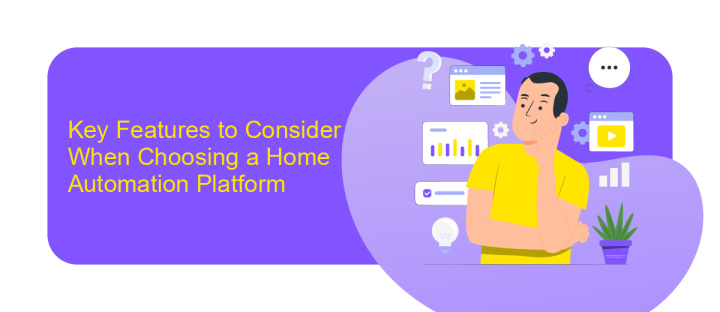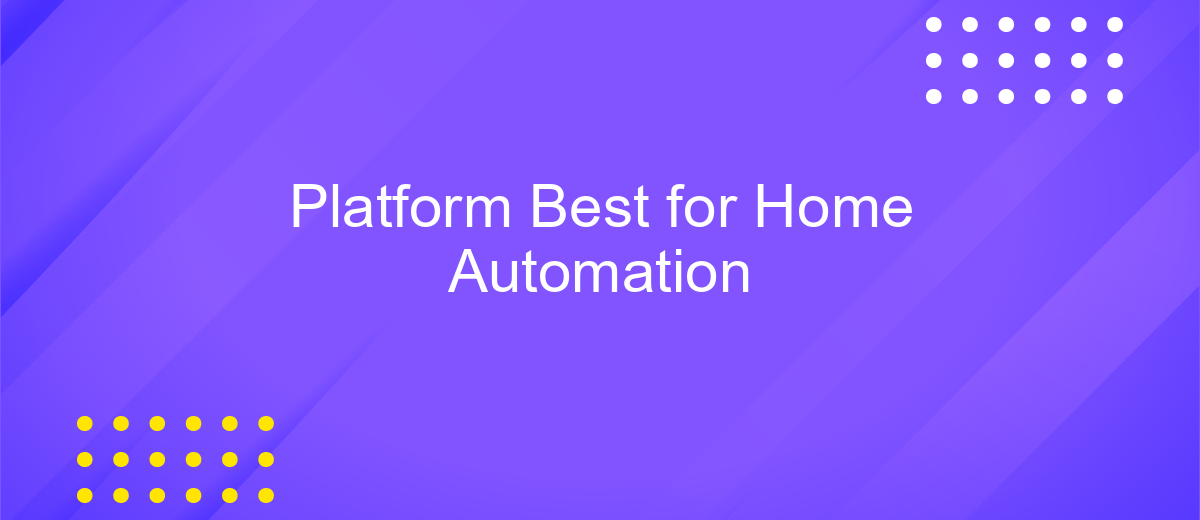Platform Best for Home Automation
In today's rapidly advancing technological landscape, home automation has become a cornerstone of modern living, offering convenience, security, and energy efficiency. Choosing the right platform for home automation can be daunting, given the myriad of options available. This article explores the best platforms for home automation, focusing on their features, compatibility, and ease of use, to help you make an informed decision for your smart home setup.
Introduction: The Rise of Smart Homes and the Need for a Central Platform
The concept of smart homes has transformed from a futuristic idea into a present-day reality, revolutionizing the way we interact with our living spaces. As technology advances, more households are integrating smart devices to enhance convenience, security, and energy efficiency. This rapid adoption of smart technology underscores the growing need for a centralized platform that can seamlessly manage these diverse devices and systems.
- Smart lighting systems that adjust based on time and occupancy.
- Thermostats that learn your preferences and optimize energy use.
- Security cameras and locks that provide real-time monitoring and control.
- Voice-activated assistants that streamline daily tasks.
With the proliferation of smart devices, each potentially operating on different protocols and standards, a unified platform becomes essential. Such a platform not only simplifies the user experience by providing a single interface but also enhances the interoperability between devices. This integration ensures that users can fully leverage the benefits of smart home technology, paving the way for more intelligent, responsive, and connected living environments.
Key Features to Consider When Choosing a Home Automation Platform

When selecting a home automation platform, one of the primary features to consider is compatibility with various devices and systems. A robust platform should seamlessly integrate with a wide range of smart home devices, from lighting and thermostats to security cameras and smart speakers. This ensures a cohesive smart home ecosystem where all components work harmoniously. Additionally, the platform should support popular communication protocols like Zigbee, Z-Wave, or Wi-Fi, allowing for flexible and scalable automation solutions.
Another crucial aspect is user-friendliness and customization options. The platform should offer an intuitive interface, enabling users to easily set up and manage their smart home systems. Customization features, such as the ability to create personalized automation routines and schedules, enhance the user experience. For more advanced integrations, services like ApiX-Drive can be invaluable, offering streamlined solutions to connect different apps and automate workflows without extensive coding knowledge. This empowers users to tailor their home automation to fit their unique needs, maximizing convenience and efficiency.
Top Home Automation Platforms: A Comparative Analysis

In the rapidly evolving world of smart homes, choosing the right home automation platform is crucial for seamless integration and control of your devices. Each platform offers unique features, compatibility options, and user experiences. Here's a comparative analysis of the top contenders in the market:
- Apple HomeKit: Known for its robust security and privacy features, HomeKit provides a user-friendly interface for Apple device users, offering seamless integration with Siri.
- Google Home: With its strong AI capabilities, Google Home excels in voice recognition and offers extensive compatibility with a wide range of smart devices.
- Amazon Alexa: Renowned for its vast ecosystem, Alexa supports a myriad of third-party devices and offers powerful voice control features.
- Samsung SmartThings: Offering extensive device compatibility, SmartThings provides a versatile platform with robust automation capabilities and an intuitive app interface.
Each of these platforms has its strengths, making the choice largely dependent on personal preferences and existing device ecosystems. Whether you prioritize security, compatibility, or voice control, understanding these differences can help you make an informed decision for your smart home needs.
Choosing the Right Platform for Your Needs: A Practical Guide

Choosing the right home automation platform can be a daunting task, given the multitude of options available. It’s essential to identify what you want to achieve with your smart home setup. Are you looking to enhance security, improve energy efficiency, or simply add convenience to your daily routine?
Once you have a clear understanding of your goals, consider the compatibility of the platform with your existing devices. Some platforms offer broader compatibility, while others work best within their own ecosystems. Budget is another crucial factor; some platforms require a subscription fee for advanced features.
- Determine your primary goals for home automation.
- Check compatibility with existing devices and systems.
- Consider the long-term costs, including subscriptions.
- Evaluate the platform's user interface and ease of use.
- Research customer reviews and expert opinions.
By carefully assessing these factors, you can narrow down your choices and select a platform that aligns with your needs and preferences. Remember, the best platform is one that integrates seamlessly into your lifestyle, providing both functionality and ease of use.


Future Trends in Home Automation and Platform Development
The future of home automation is set to be shaped by advancements in artificial intelligence and machine learning, enabling systems to learn and adapt to user preferences with greater precision. This evolution will lead to more personalized and intuitive smart home environments, where devices communicate seamlessly to optimize energy efficiency, security, and convenience. As technology progresses, we can expect a surge in the integration of voice-controlled assistants and IoT devices, making homes smarter and more responsive to the needs of their inhabitants.
Platform development will focus on enhancing interoperability and simplifying the integration process, allowing users to connect multiple devices effortlessly. Services like ApiX-Drive will play a crucial role in this landscape by offering streamlined solutions for integrating various home automation platforms and devices. This will empower users to customize their smart home ecosystems without requiring extensive technical expertise. As platforms become more user-friendly and accessible, the adoption of home automation technologies is expected to grow, paving the way for a future where smart homes are the norm rather than the exception.
FAQ
What is the best platform for home automation?
How can I integrate different smart home devices from various brands?
Are there any security concerns with home automation platforms?
Can I control my home automation system remotely?
Is it possible to automate tasks without programming skills?
Strive to take your business to the next level, achieve your goals faster and more efficiently? Apix-Drive is your reliable assistant for these tasks. An online service and application connector will help you automate key business processes and get rid of the routine. You and your employees will free up time for important core tasks. Try Apix-Drive features for free to see the effectiveness of the online connector for yourself.

